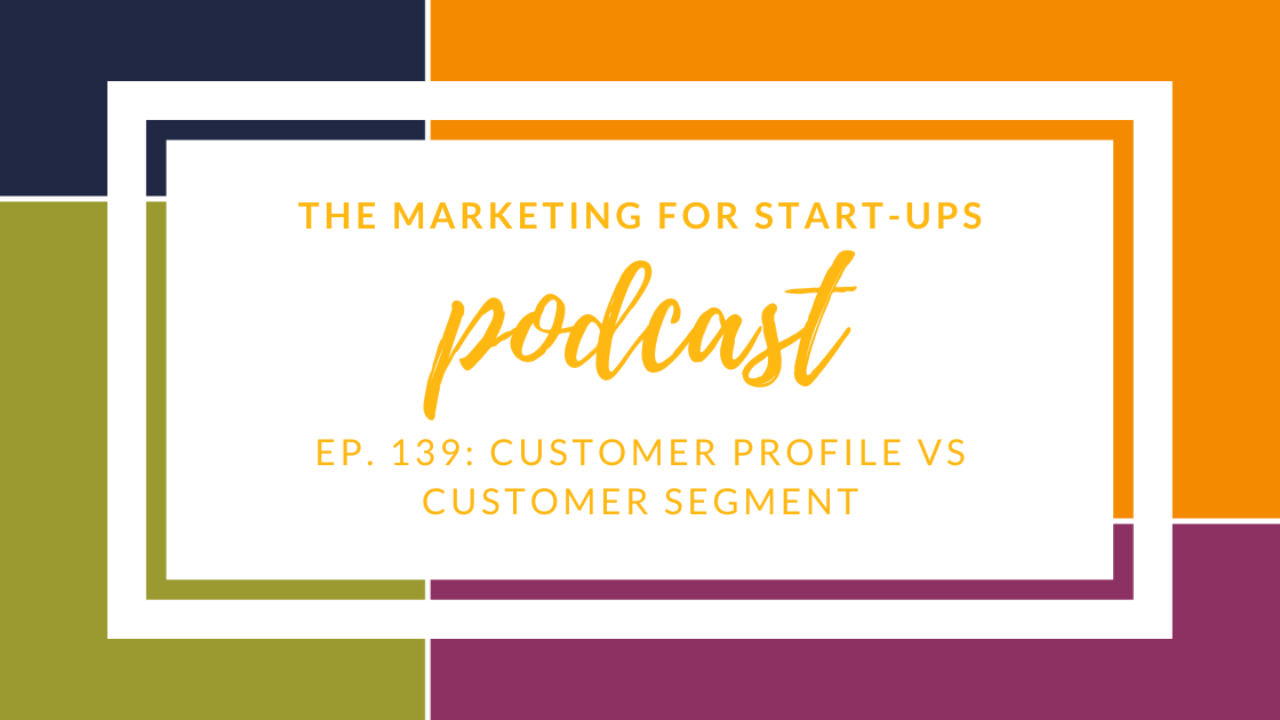Customer Profile vs Customer Segment
Aug 29, 2023
Visionary founders recognize that achieving growth and market dominance frequently stems from mastering the fundamentals, as opposed to chasing novelty. One of the most important fundamental skills to master is developing an authentic connection with your audience. Enter the dynamic duo: customer profiles and customer segments, your ultimate toolkit for building unbreakable bonds with your customers.
Getting Started: The Basics
Picture this: You've just launched a new amazing product or service, and you're eager to make a splash in the market. To ensure your business thrives, you need to connect with your target audience effectively. This is where customer profiles and customer segments come into play.
Customer Profile: The Individual Portrait
A customer profile is like painting an intricate portrait of your ideal customer. It's about delving deep into their demographics, psychographics, behaviors, preferences, and pain points. You're essentially creating a detailed individual persona to guide your marketing efforts. Ask yourself questions like:
-
Who is your typical customer?
-
What are their age, gender, location, and occupation?
-
What are their interests, values, and challenges?
-
How do they interact with technology and media?
-
What triggers their purchasing decisions?
By having a comprehensive understanding of your customer's persona, you can tailor your messaging, content, and products to resonate with their specific needs. It's like crafting a personal connection with each customer.
It is best to focus on one customer profile at a time. Gaining validation and traction from one type of customer before chasing a new customer profile. When you market to many different customer profiles, you need to tailor your marketing and sales funnels to each one. This takes an enormous amount of time, energy, and investment.
Customer Segments: The Power of Groups
Now, let's talk about customer segments. While a customer profile is an individualized approach, customer segments focus on grouping similar profiles based on shared characteristics. Segmentation allows you to address various customer clusters in a targeted manner. There are multiple ways to segment your audience:
-
Demographic Segmentation: Dividing customers by age, gender, income, education, and more.
-
Geographic Segmentation: Categorizing customers by location, city, country, or climate.
-
Psychographic Segmentation: Grouping customers by lifestyle, values, interests, and attitudes.
-
Behavioral Segmentation: Segmenting based on purchasing patterns, usage frequency, brand loyalty, etc.
3 Examples of Customer Profiles and Corresponding Segments
-
Customer Profile: Fitness Enthusiast
-
Demographic Segments: Divided by age (18-30, 31-45), gender (male, female), income (student, working professional), and education level (high school, college graduate).
-
Geographic Segments: Separated by urban, suburban, and rural areas.
-
Psychographic Segments: Grouped by fitness goals (weight loss, muscle gain, overall health), lifestyle (active, sedentary), and preferred exercise activities (running, yoga, weightlifting).
-
Behavioral Segments: Categorized by gym membership status, frequency of workouts (daily, weekly), and preferred fitness class attendance.
-
Customer Profile: Tech-Savvy Millennial
-
Demographic Segments: Divided by age (25-30), gender (gender-neutral), income (middle-income, high-income), and education level (bachelor's degree, master's degree).
-
Geographic Segments: Separated by urban dwellers, suburban residents, and digital nomads.
-
Psychographic Segments: Grouped by tech interests (gaming, programming, digital art), values (environmental consciousness, social justice), and preferred online platforms (social media, forums, streaming sites).
-
Behavioral Segments: Categorized by frequency of online purchases, tech gadget adoption, and willingness to try new digital services.
-
Customer Profile: Health-Conscious Parent
-
Demographic Segments: Divided by age (30-45), gender (female), income (middle-income), and number of children (1 child, multiple children).
-
Geographic Segments: Separated by urban families, suburban households, and rural residences.
-
Psychographic Segments: Grouped by dietary preferences (vegetarian, gluten-free), parenting style (attachment parenting, authoritative), and health-related concerns (allergies, child development).
-
Behavioral Segments: Categorized by frequency of organic food purchases, engagement with parenting blogs and forums, and participation in wellness workshops for families.
These customer profiles and segments provide insights into how businesses can tailor their marketing strategies and product offerings to cater to the diverse needs and preferences of their target audiences.
The Conversion Connection: Customization is Key
Now, here's the juicy part backed by some eye-opening statistics. According to a recent study by Salesforce, 73% of consumers expect brands to understand their needs and expectations. This is where personalized communication shines. When you tailor your messages to align with your customer profiles and segments, magic happens:
-
Higher Engagement: Stats show that personalized emails have an open rate of around 18.8%, compared to generic emails at 13.1%. Customers feel valued when you speak directly to their needs.
-
Enhanced Conversions: Research by Epsilon indicates that personalized messages can drive 10x higher conversion rates compared to standard messages. When customers feel understood, they're more likely to take action.
-
Boosted Loyalty: Deloitte's study highlights that 36% of customers expressed interest in buying products and services that are personalized to their needs. This not only increases conversions but also fosters brand loyalty.
In Conclusion: A Recipe for Success
Embracing the power of customer profiles and segments is your secret weapon to soaring conversion rates. The intricate customer profiles help you build emotional connections while segmenting your audience lets you cater to diverse needs. Remember, the heart of your business lies in your customers' hearts! So, gather your data, put on your strategic thinking hat, and start crafting those personalized messages that speak volumes to your audience. Your journey to higher conversions begins with understanding and serving your customers like never before.
Take a listen! 👇🏻
Get more like this.
New ideas, motivation and inspiration delivered to your inbox.
We hate SPAM. We will never sell your information, for any reason.

